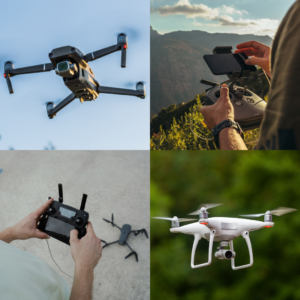Information for Drone Operators
With unmanned aerial systems, commonly referred to as drones, being relatively cheap in price and easy to fly, Champaign Police wanted to provide important information for hobbyists and commercial drone pilots about the use of these devices in Champaign. These devices are not governed by local ordinance, but do fall under the regulations of the Federal Aviation Administration and the policies of property owners. Anyone flying a drone is responsible for flying within Federal Aviation Administration (FAA) guidelines and regulations. Please note that the information on this page is being provided as a courtesy to residents, and is subject to change by regulating authorities without local notice.
Unless specifically authorized by the FAA, recreational drone flying is limited to no more than 400ft above ground level in uncontrolled airspace and is limited to UAS Facility Map (UASFM) altitudes in controlled airspace.
Drone operators are encouraged to check the weather in Champaign prior to flying. Forecasts for the upcoming week can be found here: National Weather Service IDSS Forecast Points.
All UAS flights, aircraft, and Hobbyists and/or Remote Pilots must meet current FAA requirements for the type of flight, purpose of the flight, flight operator requirements, and flight conditions. This means you must know your flight plans and the type of flyer (recreational or commercial) you are before deciding which FAA requirements apply to you. If needed, use the FAA User Identification Tool to assist you in determining what type of flyer you are. Beginning September 16, 2023, all drone pilots who are required to register their UAS must operate in accordance with the rule on Remote ID. More information on Remote ID can be found in this FAA webpage and in this document. Safety and security are top priorities for the FAA and Remote ID for drones is crucial. UAS or drones under 55 pounds (25kg) in the NAS are regulated by the Code of Federal Regulations 14 CFR Part 107, referred to as the Small UAS Rule. Personnel flying under these regulations are commonly referred to as Part 107 or Commercial Flyers. If you are flying a drone for purely recreational (for enjoyment), or for educational and research purposes, there is a limited statutory exception that provides a basic set of requirements. Personnel flying under these regulations are commonly referred to as Recreational or TRUST Flyers. In summary, all UAS flights require certification through one of the following options: If you are not flying for recreational or educational purposes, you must comply with the guidelines in Part 107. Champaign property owners seeking to have their drone restrictions listed here should email [email protected].
– Part 107 License.
– Exception for Recreational Flyers (TRUST Program).
– Part 61 License holders (those holding a pilots license for manned aircraft), can complete a special course to become certified for drone flights.Part 107 (14 CFR Part 107)

